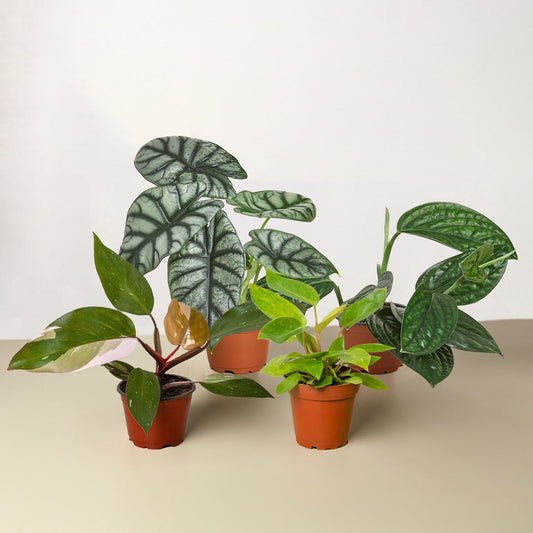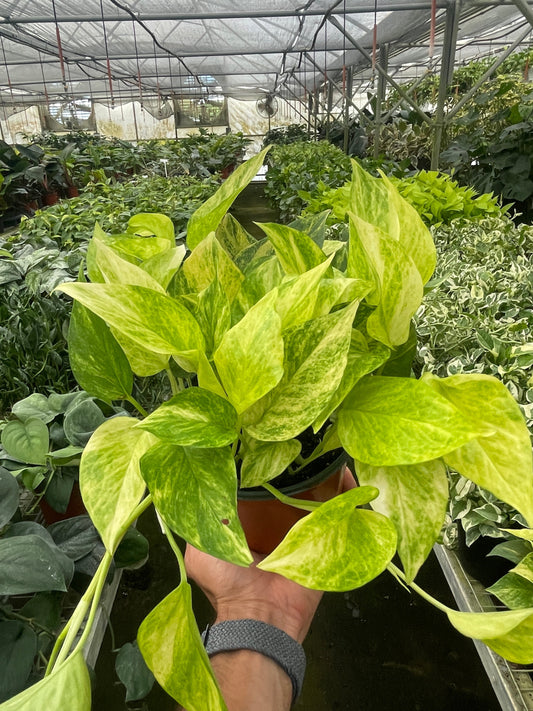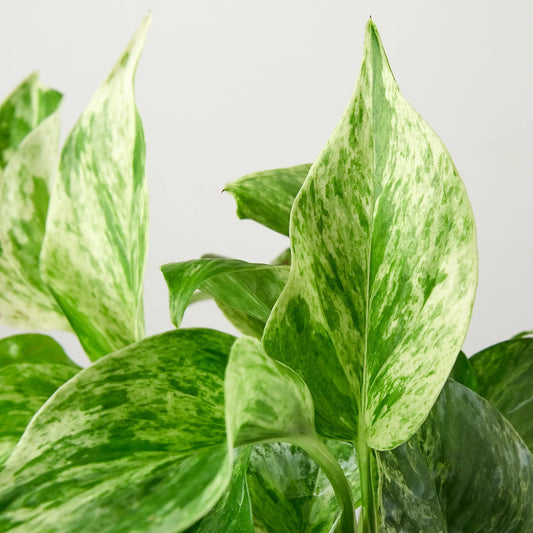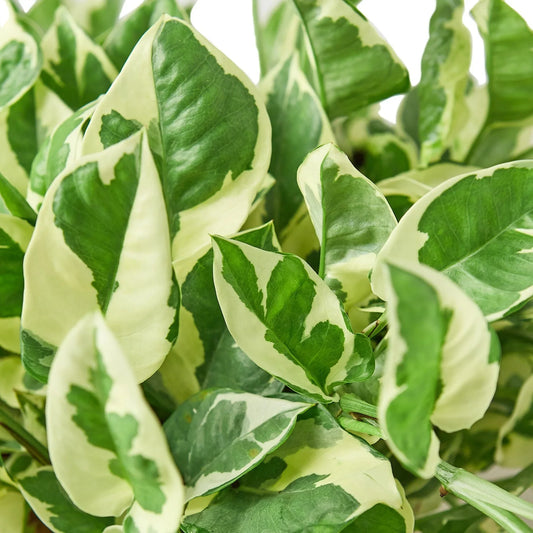Types of African Mask Varieties: The Complete Guide
Cafe Planta Team
The fascination with African masks transcends borders and cultures, reaching into the hearts of many who appreciate their artistic and cultural significance. These masks are not just decorative pieces; they embody stories, traditions, and the vibrant history of various African tribes.
In this article, we'll explore the different types of African masks, each with its unique features and cultural heritage. From their materials and techniques to their roles in rituals and society, let's get to know these captivating artifacts and what they represent.
The Baule Masks
Baule masks hail from the Baule people of the Ivory Coast. Known for their delicate craftsmanship, these masks are often used in traditional dances and ceremonies. Their designs are characterized by an oval face, almond-shaped eyes, and a serene expression, symbolizing beauty and tranquility.
Interestingly, Baule masks are not just for entertainment. They play a significant role in the Goli dance, performed during harvest festivals, funerals, and other important community events. There are different types of Baule masks, each representing various aspects of life and spiritual beliefs.
- Goli Glen: Known as the "father" mask, it represents strength and protection.
- Goli Kple Kple: The "child" mask, usually red, is worn by young men and represents joy and youth.
The process of creating these masks is a sacred art, passed down through generations. Carvers use wood, paint, and sometimes metal to bring these masks to life. This meticulous process ensures that each mask not only looks beautiful but also resonates with spiritual meaning.
The Dan Masks
The Dan people, primarily located in Liberia and Ivory Coast, are famous for their masks, which serve as a conduit between the physical and spiritual worlds. Dan masks are known for their smooth surfaces, emphasized facial features, and the use of natural materials like feathers and animal skins.
These masks are worn during initiation ceremonies, rituals, and social events. The most notable Dan masks include:
- Gelede: A mask that celebrates the wisdom of mothers and women.
- Deangle: Known for its nurturing and peaceful nature, this mask is used in teaching and entertainment.
The creation of a Dan mask is a spiritual journey. Carvers believe they are guided by the spirits to create a mask that embodies the essence of the being it represents. This connection between artist and spirit is what makes each Dan mask unique and deeply revered.
The Yoruba Masks
The Yoruba people of Nigeria have a rich cultural heritage, and their masks reflect their deep spiritual beliefs and artistic flair. Yoruba masks are often used in religious rituals, festivals, and ceremonies, serving as a bridge between the human and divine.
One of the most famous Yoruba masks is the Gelede mask, which celebrates the power and importance of women in society. These masks are worn during the Gelede festival, which honors the mothers of the community and their crucial role in maintaining social harmony.
Yoruba masks are typically colorful, incorporating bright paints and intricate designs. The masks often feature multiple faces, representing the multifaceted nature of the spirit world. Carving these masks requires skill and precision, as they must capture both the physical beauty and spiritual essence of their subjects.
The Fang Masks
The Fang people, found in Gabon, Cameroon, and Equatorial Guinea, are known for their striking masks, which are integral to their religious and social practices. Fang masks, often elongated with stylized features, are used in ceremonies to protect the community and communicate with ancestral spirits.
The Ngil mask, one of the most well-known Fang masks, is linked to the Ngil society, a secret male society responsible for maintaining order and justice. These masks are worn during initiation rites and legal proceedings, serving as a powerful symbol of authority and spiritual presence.
Fang masks are typically made from lightweight wood, allowing dancers to perform elaborate movements during ceremonies. The masks' stark white faces, often adorned with dark lines and patterns, create a striking visual that leaves a lasting impression on those who witness their performances.
The Dogon Masks
The Dogon people of Mali are renowned for their masks, which play a central role in their religious and cultural life. Dogon masks are used in the Dama ceremony, a ritual that marks the end of mourning and the transition of the deceased into the spiritual realm.
With over 80 different types of masks, each representing a specific ancestor or mythical being, the Dogon people have a rich tapestry of symbolism woven into their mask-making tradition. Some of the most notable Dogon masks include:
- Kanaga: A mask with a unique cross-shaped design, symbolizing the connection between heaven and earth.
- Satimbé: A mask that represents the spirit of an ancient woman, celebrating the wisdom and strength of female ancestors.
The creation of Dogon masks involves a complex process of carving, painting, and decorating, often taking weeks or even months to complete. Each mask is a testament to the Dogon people's artistic mastery and deep spiritual connection to their ancestors.
The Chokwe Masks
The Chokwe people, found in Angola, the Democratic Republic of the Congo, and Zambia, are known for their distinctive masks, which play a vital role in their social and religious ceremonies. Chokwe masks are often used in initiation rites, fertility rituals, and celebrations of the harvest.
One of the most famous Chokwe masks is the Pwo mask, which represents the idealized beauty and virtues of a young woman. These masks are worn by male dancers during initiation ceremonies, symbolizing the transition from youth to adulthood.
Chokwe masks are characterized by their intricate designs, featuring patterns and motifs that reflect the values and beliefs of the Chokwe people. The masks are often adorned with raffia, beads, and other decorative elements, adding to their visual appeal and cultural significance.
The Senufo Masks
The Senufo people, residing in Ivory Coast, Mali, and Burkina Faso, have a rich tradition of mask-making, with their masks playing a central role in religious and social ceremonies. Senufo masks are used in rituals to communicate with ancestors, protect the community, and ensure a successful harvest.
One of the most notable Senufo masks is the Kponyugo mask, also known as the "firespitter" mask. This mask, with its fierce appearance and intricate details, is worn during ceremonies to ward off evil spirits and protect the community from harm.
Senufo masks are characterized by their bold designs and vivid colors, often incorporating animal motifs and symbolic patterns. The masks are crafted with great care and precision, reflecting the Senufo people's deep connection to their spiritual beliefs and cultural heritage.
The Bwa Masks
The Bwa people, primarily located in Burkina Faso and Mali, are known for their distinctive plank masks, which are used in religious and social ceremonies. Bwa masks are characterized by their large, flat surfaces, geometric patterns, and vibrant colors, making them striking and visually captivating.
These masks are used during initiation ceremonies, harvest festivals, and other significant events, serving as a means to communicate with ancestors and spiritual beings. Some of the most notable Bwa masks include:
- Hawk mask: A mask that represents the spirit of the hawk, symbolizing strength and vigilance.
- Buffalo mask: A mask that embodies the power and resilience of the buffalo, used in ceremonies to ensure a bountiful harvest.
The creation of Bwa masks is a collaborative effort, with carvers, painters, and decorators working together to craft these intricate and meaningful pieces. The masks' bold designs and vibrant colors reflect the Bwa people's rich artistic tradition and deep spiritual connection to the natural world.
The Lwalwa Masks
The Lwalwa people, residing in the Democratic Republic of the Congo, are known for their unique masks, which are used in initiation ceremonies and other important cultural events. Lwalwa masks are characterized by their geometric shapes, elongated features, and bold designs, making them visually striking and artistically significant.
These masks serve as a means to communicate with ancestors and spiritual beings, ensuring the community's well-being and prosperity. The most notable Lwalwa masks include:
- Nkaki: A mask that represents the spirit of the ancestor, used in initiation ceremonies to guide young men into adulthood.
- Shifola: A mask that embodies the spirit of fertility, worn during ceremonies to promote growth and abundance.
The creation of Lwalwa masks involves a meticulous process of carving, painting, and decorating, with each mask reflecting the Lwalwa people's deep spiritual beliefs and cultural heritage. These masks are not only beautiful works of art but also important symbols of the Lwalwa people's connection to their ancestors and the spiritual world.
Final Thoughts
The world of African masks is as diverse and vibrant as the cultures they represent. Each mask tells a story, embodying the rich history and spiritual beliefs of the communities that create them. From the Baule to the Lwalwa, these masks serve as a testament to the artistic and cultural heritage of Africa.
At Cafe Planta, we're passionate about helping you care for your plants and create beautiful, thriving spaces in your home. If you have any questions or need assistance, feel free to email us or reach out on Instagram. We're excited to share our love of plants with you and support your journey as a plant parent.



















